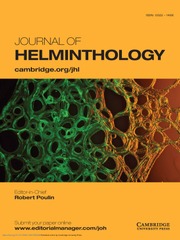No CrossRef data available.
Article contents
Short communication: Exploring gastrointestinal tract nemabiomes in captive ungulates at the SANBI National Zoological Gardens: A next-generation sequencing baseline approach
Published online by Cambridge University Press: 06 January 2025
Abstract
Gastrointestinal tract (GIT) nematode infections have a significant negative impact on the well-being and productivity of animals. While it is common for a host to be co-infected with multiple species of nematode parasites simultaneously, there is a lack of effective tools to study the composition of these complex parasite communities. We describe the application of the “nemabiome” amplicon sequencing to study parasitic GIT nematode communities in captive wildlife at the National Zoological Garden, South African National Biodiversity Institute. A total of 13 samples from Roan antelope (n=1), Eland (n=1), Sable antelope (n=9), Arabian oryx (n=1), and Blue duiker (n=1) were analysed for the presence of GIT nematode infections. A total of 256 operational taxonomical units (OTUs) were generated and compared to a curated database with ≥99% identity to sequences in the NCBI database. The OTUs found represented nematode species which are commonly associated with wild ruminants. These belonged to members of the genera Haemonchus, Trichostrongylus, and Cooperia, with a few OTUs classified as unidentified genera detected. These were further classified to species level, with Haemonchus contortus and Trichostrongylus colubriformis having high relative abundance across all captive ungulate species. Utilizing amplicon sequencing to examine the nemabiome holds great potential for enhancing our basic knowledge of the biology of gastrointestinal nematodes and monitoring infections. This improved understanding could guide the development of more efficacious preventive and control measures against these significant parasites, which negatively impact animal health and productivity on a global scale.
Information
- Type
- Short Communication
- Information
- Copyright
- © The Author(s), 2025. Published by Cambridge University Press

